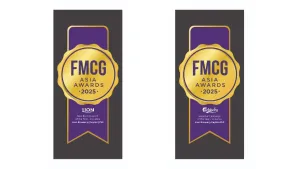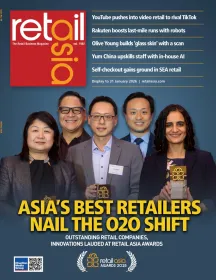
China to drive Asia’s retail growth
It is expected to account for 60% of the region’s consumption in the next decade.
China’s consumer market remains a key driver of Asia’s retail growth, according to global consulting firm Roland Berger Southeast Asia, even if consumption has not quite taken off and investment is still weighed by a crisis in its property sector.
“China’s time is not over,” Julien Bourdinière, a senior partner of consumer goods and retail at management consultancy Roland Berger Southeast Asia, told the recent Retail Asia Summit 2024 in Singapore.
In the next decade, China will account for 60% of the region’s total consumption growth, adding an amount that is double India's private consumption in 2023, he pointed out. “The size and growth of China is still going to remain a very important driver for the whole region.”
This is despite consumer confidence hitting a near-all-time low of 85.7 points in September amidst slowing growth.
India is also emerging as a key player in Asia’s consumer landscape, Bourdinière said, noting that its consumer market is now at a stage similar to China in 2003, just before its massive transformation.
“We are at the moment of growth of Indian retail and consumer goods,” he said, adding that the consumer market of the world’s most populous nation is expected to expand significantly.
Consumer spending in Asia is expected to hit $16t in 2024, or 27% of the global market, according to Bourdinière, citing their recent study. Private consumption in the region is expected to increase by $7t in the next decade.
Southeast Asia also continues to grow, with countries like Thailand and Vietnam benefiting from strong consumer confidence and solid economic growth. In contrast, developed economies like Japan and South Korea are grappling with slower growth and negative consumer sentiment.
“Asia is a very, very price-sensitive market,” Bourdinière said, citing both consumer behaviour and the competitive strategies of brands.
This trend has boosted e-commerce, where transparent prices and discounts dominate the shopping experience, he said. Luxury brands, in particular, are grappling with this issue and are forced to reconsider their premium pricing strategy.
Health and sustainability are also becoming more important for consumers. “It’s no longer about just selling a product. It’s about selling a product that’s healthier and more sustainable,” Bourdinière said.
He added that brands are responding with healthier and more sustainable options, at the expense of higher costs.
A growing preference for local brands is another trend. “Two-thirds of [Chinese] consumers now prefer local brands,” Bourdinière said. Moreover, convenience and speed are driving retail trends, with consumers demanding a more efficient shopping experience.
Southeast Asian retailers have built a strong omnichannel space, given its varying digital environments, he pointed out.
He cited successful companies like DFI Retail Group, which has thrived through value-driven private labels, and Unilever Plc, which has integrated sustainability at scale.
Meanwhile, Anta Sports Products Ltd., the world's largest sports equipment company by revenue, has advanced in China’s competitive sportswear market, while Decathlon, a French sporting goods retailer that is the largest in they world, continues to lead in digital retail innovation with its use of RFID technology, Bourdinière said.

















 Advertise
Advertise




